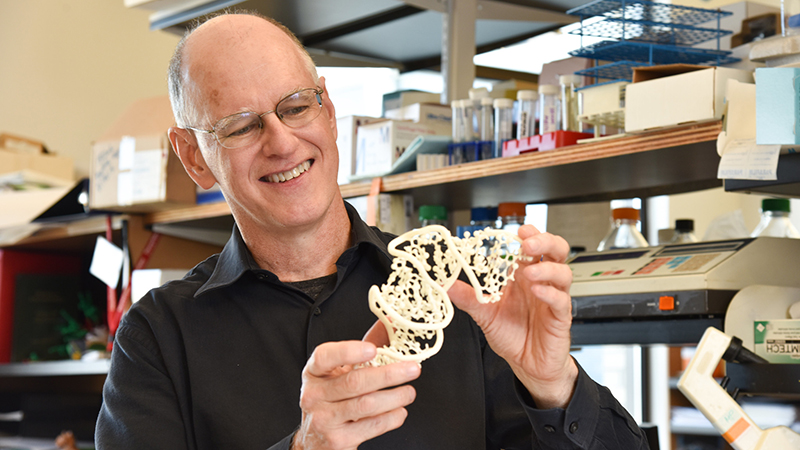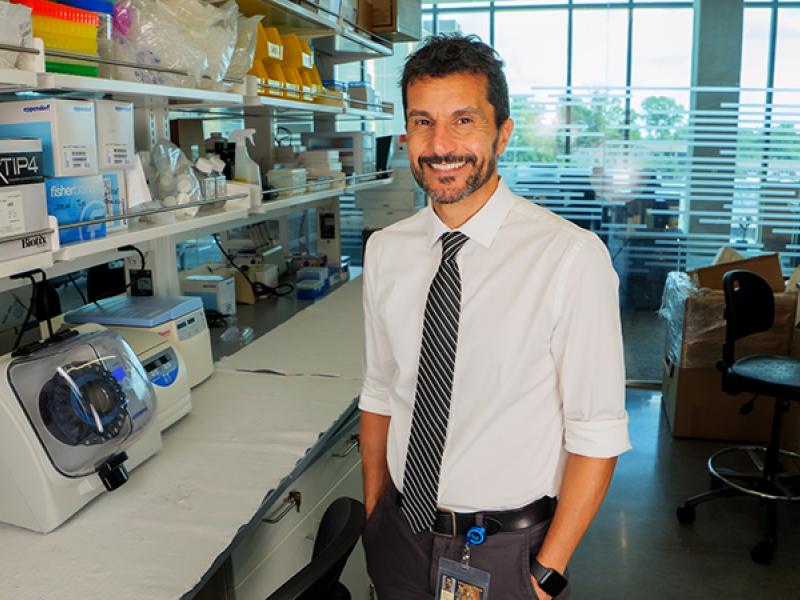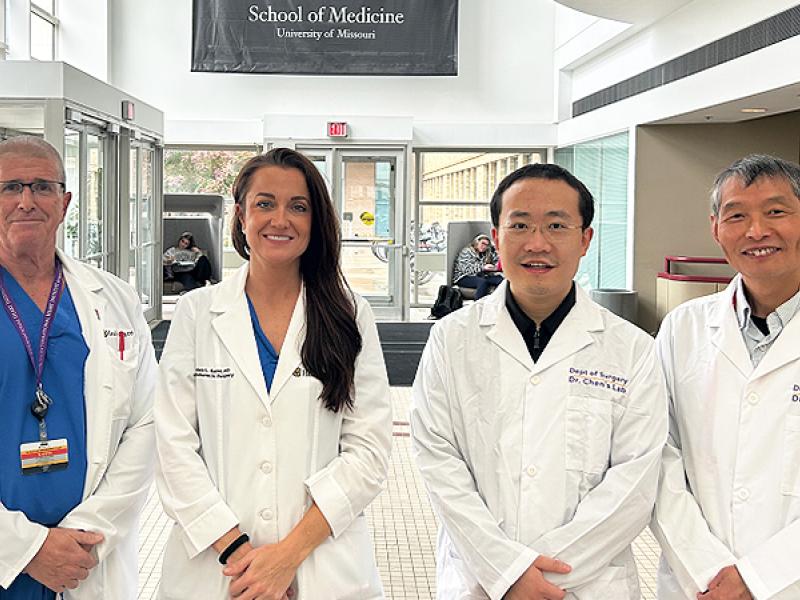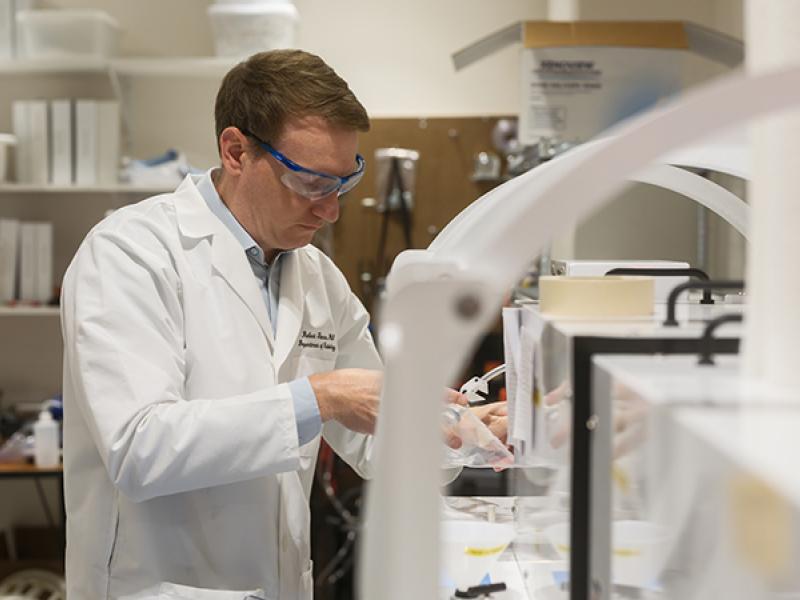
By Lauren Hines | Bond LSC
The search for life on other planets may seem quite literally out of reach, but the search actually starts here, on Earth.
“Something that guides people in thinking about how life might come about on other worlds is trying to understand how life might have started here on this planet,” said Donald Burke-Agüero, PhD, principal investigator at Bond Life Sciences Center and professor of Molecular Microbiology & Immunology in the MU School of Medicine.
The Burke lab recently won a $5 million Interdisciplinary Consortium for Astrobiology Research (ICAR) award from NASA in partnership with eight other institutions. The award will fund their proposal to study RNA as a model for the origins of life.
Scientists hypothesize that RNA, a nucleic acid, was at the heart of molecular processes when life started around 4 billion years ago. RNA is like DNA in that it is a set of instructions and can store genetic information about basic building blocks for life, but it can also perform chemical reactions like enzymes. These two functions help speed up reactions to make important molecules needed for life.
“Becoming part of this has been over 20 years in the making for me,” Burke said. “It’s a theme that I care about tremendously, which is providing a really solid experimental foundation for some of the speculation about how life may have started.”
Burke found out about the grant while he was in another zoom meeting.
“I went back to the meeting and said, ‘Guys, I can’t stay. I’m not paying attention to anything you’re saying right now. Have fun. I’m bouncing off the walls,’” Burke said.
The predecessor to the ICAR program was the NASA Astrobiology Institute, which first called for members in 1998. Burke was starting his first faculty position back then. He always wanted to be a part of it, but it never quite worked out until now.
The “RNA World Hypothesis” has intrigued and driven scientists since the 1960s but has been increasingly explored in the past three decades as technological advances have allowed scientists to look for evidence to support it.
“Part of being in the origin of life team is working with RNA and to expand its known limitations,” said Jordyn Lucas, a Ph.D. student in the Burke lab. “We also like to explore how various modifications could make RNA better at doing a specific job, or how can it make it more durable under certain conditions.”
While RNA can make some reactions, it is possible that a certain set of modifications, tools or conditions could push RNA to perform more like an enzyme. This grant will help the Burke lab find those conditions if there are any.
“It’s kind of like a tool,” Lucas said. “It’s like if I gave you a piece of paper, asked you to write an essay, but I didn’t give you a pen. You can’t do it. It’s not because you don’t have the ability to do it. You just don’t have the right tools.”
Those tools can be hard even for humans to access.
A tube the size of your fingertip can contain quadrillions of RNA molecules and therefore quadrillions of sequences. That’s not an exaggeration. You can imagine how difficult it would be to sift through all that by testing them one by one. It wasn’t until in vitro evolution — a method that screens through large amounts of nucleic acid sequences — in the 1990s that scientists could explore many questions about RNA. Even with that, today’s technology is limited.
“Part of what this grant is going to do is attack that problem to try to specifically do the things that have been technologically very difficult,” Burke said.
The aim of the proposal is to push the limits of what RNA is capable of doing. These findings could bring the RNA World theory closer to being an established fact. This would help NASA know what conditions to look for life on other planets.
The technological advances from this project will also have implications for synthetic biology applications like biomedicines and biofuels. The goal is to find ways in which parts of modern biology can be replaced with RNA that can do something similar.
“Obviously, understanding our place in the universe and how we came about is a big deal and would be a societal benefit, but also a tangible thing that helps somebody be healthier,” Burke said. “That’s important too.”
Further exploring RNA brings us one step closer to a model of the origins of life on Earth and even life on other planets.
“We have no idea how likely life is,” Burke said. “If we can help demonstrate some of the ways that life comes into existence, it will really help to understand how many neighbors we might have on other worlds. And whether we’re likely to have any neighbors at all.”
Institutions involved in the proposal are the University of Missouri in Columbia, St. Louis University, Purdue University, University of Southern Mississippi, University of California in Irvine, University of California in San Diego, University of Washington in Seattle and University of California in Los Angeles.
This story originally appeared in Decoding Science on November 9, 2020.





